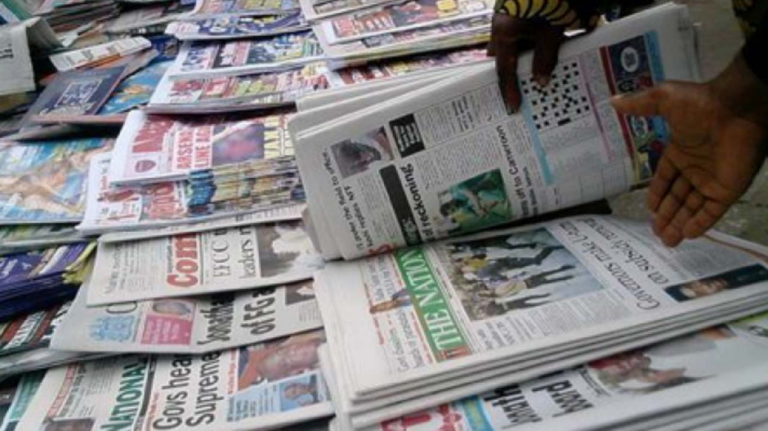
Nigeria has been playing significant roles in Africa’s economic and political development before and since her independence in 1960. In the area of media and communication, the first indigenous newspaper was established by a Nigerian. The newspaper was founded in 1859 and named “Iwe Irohin Fun Awon Egba ati Yoruba.” In Nigeria, the first television station was established in 1959 and was located in the western region. Some years later, the northern and eastern regions had their own television stations. The trends partially ended the British Broadcasting Corporation’s content distribution from London to the country through its African Broadcasting Service. It was partial because the new television stations still incorporated the BBC’s content as part of their international news for Nigerians.
The movement from the parliamentary system of government to the federal system ended the regional ownership of the stations. They became the Nigeria Television Authority and were dubbed the largest African television network because of their presence in almost all the states. During the military administration of General Ibrahim Babangida, the stations witnessed radical challenges through the implementation of public broadcast policies that enhanced organisational structures and employees’ capacity to deliver coordinated national information to the public. This continued throughout successive military and democratic administrations. However, President Olusegun Obasanjo’s administration’s implementation of neoliberalism policy in 1999, which allowed deregulation and privatisation to take centre stage in media development, opened up print and broadcast markets to a number of media entrepreneurs, and business and non-business corporate organisations now own media outlets across the country.
Similar to what is prevalent in other democracies such as the United States of America, the United Kingdom, Canada and some countries in the global south, our analyst examines Nigeria’s media concentration and ownership patterns and draws out critical insights from the emerging trends. The majority of the existing 677 media organisations (mainstream conventional television, radio, and newspaper) are concentrated in the south-west and north-central regions, with the north-east and south-east having low concentrations. State-by-state analysis indicates that of the 64.10% of privately-owned media organisations, Lagos has 10% of them, and the Federal Capital Territory follows with 6.10%. Kaduna (2.50%) and Lagos (2.20%) states have the highest levels of public ownership among the 677 media organizations, accounting for 35.80%. This public ownership includes the state and federal governments.
Register for Tekedia Mini-MBA edition 19 (Feb 9 – May 2, 2026): big discounts for early bird.
Tekedia AI in Business Masterclass opens registrations.
Join Tekedia Capital Syndicate and co-invest in great global startups.
Register for Tekedia AI Lab: From Technical Design to Deployment (next edition begins Jan 24 2026).
Analysis by media type reveals that the Nigerian media system has more radio and television stations than newspapers. From the 677 media organisations, 511 and 103 outlets are radio and television stations respectively. In the radio market, Lagos State has 5.90% of the outlets, while Oyo State also has the same percentage (5.90%). The FCT (4.60%), Kano (4.00%), Kaduna (4.00%), Ogun (3.70%), and Anambra (3.40%) follow. A state-by-state analysis reveals that television stations are overwhelmingly concentrated in Lagos State (2.10%) and the Federal Capital Territory (1.20%). The only two thriving magazines (The Tell and Newswatch) are situated in Lagos State. Four percent of the 61 newspapers are located in Lagos State. The FCT (1.50%) and Kogi (1.30%) State partially follow Lagos State in terms of the high concentration of newspapers.
Critical Media Concentration
Now, here are critical insights from our analysis, which informed the assumption that critical media concentration exists in Nigeria similar to what is available in other countries and markets. Of the 434 media outlets owned by private individuals and organisations, over 22% are located in the south-west region, while the north-central region follows with 13%. The north-west and south-south regions share the same percentage (8.60%) of private ownership, while the south-east region has 8.40%. The north-east is the only region with less than 5% (3%) of the outlets. Again, the south-west region dominates the public ownership pattern, with 8.70% of the 243 public media establishments across the country. The north-central region retains its second position with 6.90% of the outlets, while the north-west (6.40%), north-east (4.70%), south-south (4.70%) and south-east (4.40%) regions follow.
Why Should We Care
In all, the south-west region owns the media in Nigeria follows by the north-central region. This has several implications. While it is obvious that people would have access to different contents and possible diverse voices, the high concentration of media in the two regions indicates media dominance and the possible misrepresentation or framing of other regions. For instance, Sule, after analysing the coverage of various ethno-religious crises by the south-west newspapers, notes that Nigerian mass media played roles as diverse as protecting the interest of their owners and editors, geographical locations, ethnic and religious affiliations of the owners or editors. Abubakar and his colleagues reported how The Nation, a newspaper in the south-west region and privately-owned by a politician, reported ENDSARS protest by providing little spaces and publishing most of the stories using inside pages, while The Guardian, situated in the same region and privately-owned by a south-southern business man, provided much spaces for the coverage and used front pages.
In a study by Asekhamhe and others that analysed the reportage of the Indigenous People of Biafra (IPOB), a group agitating for the independence of Ibo ethnic group from Nigeria, only a few newspapers in the south-east provided adequate coverage of IPOB activities, while most of the newspapers in the south-west cited official sources towards representing agitators in line with their editorial philosophies and ownership interests, according to another set of researchers. The insights from analyses and findings from these studies reaffirm existing views that increase in media concentration hardly leads to diversity of voices. Instead, content fragmentation and polarization of groups are on the increase.



